Aug. 12 – Aug. 25, 2018
Welcome to issue two hundred and ninety-four of the Sports Doing Good newsletter. This week’s 10 stories include:
- How a 32-year-old basketball player plans to play professionally with one arm
- NBA and Turner Tap Facebook Watch for Documentary Release, “Something in the Water”
- Brain game next frontier in sports
- The fearless Bailey Foley
- ‘Listen to the Kids’: How Atlanta Became the Black Soccer Capital of America
- Simone Biles eases to fifth U.S. title, says leotard designed for survivors
- Kofi Annan, Muhammad Ali and the power of sport
- When Goalie Loses First Game 11-0, His Dad Posts Clip of His Saves and Prompts Outpouring of Support
- Brands hail the arrival of a new England after World Cup
- Who Wants to Be a Gold Medalist?
10+
The 7 Best Young Guns in the WNBA. Period. (by A’ja Wilson) (The Players’ Tribune) https://www.theplayerstribune.com/en-us/articles/wnba-aja-wilson-7-best-young-guns-period
Plogging: the latest trend in eco-friendly sport (Sport and Dev)
https://www.sportanddev.org/en/article/news/plogging-latest-trend-eco-friendly-sport
Beckham to receive UEFA President’s award (Peace and Sport)
http://www.peace-sport.org/beckham-to-receive-uefa-presidents-award/
Story of Survival (by Alexis Jones, Andrew Jones) (The Players’ Tribune) https://www.theplayerstribune.com/en-us/videos/alexis-andrew-jones-cancer-accident/
10th Anniversary Spotlight: Memories from our Network (Beyond Sport)
http://beyondsport.org/articles/10th-anniversary-spotlight-key-stakeholders/
We present again our “Featured Video” offering(s). With the explosion of video content out there highlighting the good in sport, we want to showcase such content for your enjoyment and learning. This will be an ongoing effort.
Riding (Horses) for Compton
https://www.greatbigstory.com/stories/riding-horses-for-compton
Introduction
Social media is a reality. It will not go away, as much as we may want to in some situations. There is certainly downsides to social media and a lot of instruction about how to protect yourself, your kids, and others from the negative influence it can have. While we recognize these bad elements, we choose to highlight the good (no surprise). We love how we can promote stories of the good in sport via Twitter, Facebook and Instagram, in addition to our regular newsletter. We also like how social media can rally people to support a person, cause, organization, or event.
We had such a rallying in one of the stories this week. The story, a youth soccer goalie giving up 11 goals I a game, seems hardly the top of “good” you would expect to be featured. But this story is much bigger than just a score line. It is about a young man overcoming some obstacles just to be able to play. It is about a dad who sees the good in his son being out there with other kids and having fun. And it involves a worldwide community of footy enthusiasts, players and fans, being there to support this young man and his father. The father planted the seed and social media helped this story grow. We are proud to include it in this issue.
The other stories we highlight this week include: the amazing fight by Robert Whitaker, Jr. to fulfill his dream of playing pro basketball despite having only 1 arm; the insightful and inspiring documentary, “Something in the Water;” the study and development of the brain in the quest for athletic excellence; Bailey Foley, a high school student-athlete coming back from a devastating injury; the rise of soccer in Atlanta, especially amongst its African-American population; the major statements made by gymnastics champion Simone Biles as she captured her fifth national title; Kofi Annan, Muhammad Ali and the power of sport; a feel-good story (finally) involving England’s national football squad; and creative efforts to find and develop future Olympic athletes.
Finally, we want to pass along a note from our friends at GWU’s Sports Philanthropy Program.
George Washington University Sports Philanthropy Executive Certificate Program – Registration Open
The George Washington University Sports Philanthropy Executive Certificate Program is the first and premiere program of its kind designed for individuals currently working in sports philanthropy or sport for social change roles and for those transitioning into the field. Students who enroll in the 5 month on-line program can expect to increase their personal and organization impact in the sport for social good space by gaining knowledge of best practices from seasoned industry faculty. Participants also expand their networking with guest speakers, faculty members, alumni and current students from various professional teams, leagues, non-profits and companies working for sport-related social causes.
The fall 2018 cohort kicks off in October with an optional 2 day residency and enrollment is currently open. To apply, submit your application on or before September 15, 2018. Scholarships and funding options available.
Please continue to send along your stories. You are both our audience and our best source of stories. Our Twitter handle is @sportsdoinggood, and you can find us at www.facebook.com/sportsdoinggood. And we are now also on Instagram. Find us at sportsdoinggood.
Finally, if you think others would like to receive the newsletter, please feel free to forward it on or have them contact us directly at sab@sportsdoinggood.com. (If you do not want to receive the newsletter anymore you can use the Unsubscribe button at the end of the email)
So, enjoy. And have a good week.
How a 32-year-old basketball player plans to play professionally with one arm
Watching Whitaker Jr. play basketball is like viewing a magician’s trick. Something is happening, that you’re sure of, but your eyes can’t believe it. When he has the ball in his hand, his handles are as smooth as a swan, zipping the ball from left to right and front to back with ease. He attacks the rim, barreling toward the basket with no regard for his life or body. There’s nothing left to fear. On the court he has a commanding presence, running the offense and instructing teammates during breaks in play. He can move off the ball, play on-ball defense and make passes that would populate social media on any given night. “He knows the game. He’s a very smart player,” said Jon Solomon, Whitaker Jr.’s manager. “He just knows how to play.” There are of course questions about his jumper. How can a person grip, balance and aim a basketball when two hands are necessary for each act? Michael “Troy” Hamlett, a youth basketball coach in Jacksonville, was the only coach who wanted Whitaker Jr. on his recreational league team after the accident. He drafted the one-armed boy while he was still lying in a hospital bed.
https://theundefeated.com/features/robert-whitaker-jr-32-year-old-basketball-player-plans-to-play-professionally-with-one-arm/
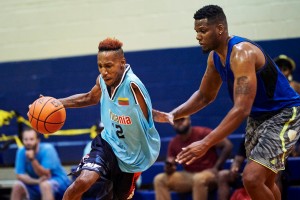 Robert Whitaker Jr. (left) drives to the basket in a local recreation league at the Glass Recreation Center in Tyler, Texas, on July 18.
Robert Whitaker Jr. (left) drives to the basket in a local recreation league at the Glass Recreation Center in Tyler, Texas, on July 18.
NBA and Turner Tap Facebook Watch for Documentary Release, “Something in the Water”
The NBA, as a league, is known for three things: basketball, its commitment to the global game and a willingness to be at the forefront of technology. This past weekend, those three elements collided in a beautifully constructed and fascinating documentary created by Turner Sports and their Players Only Films called “Something in the Water,” which premiered on Facebook Watch. The documentary focuses on a group of talented and young stars from the former Yugoslavia — such as No. 3 overall pick and Dallas Mavericks rookie Luka Doncic — who are embarking on their NBA journeys, as well as the group of players from the region who paved the way for them in the 1980s and 1990s. The plot is about family, struggle, hardship, war and the blossoming of one of the NBA’s most fertile regions for talent outside of the United States despite its smaller size. Stories like these are important for the league and its broadcast partners to tell because it showcases the power of the game and its transformative nature. “The NBA is a global game,” said Craig Barry, executive vice president/chief content officer of Turner Sports. “We live in a diverse world and we need to speak in a diverse language that extends to global platforms such as Facebook Watch. The international game is having a big impact on today’s NBA, as seen with Luka Doncic going No. 3 overall in this year’s NBA Draft and Dzanan Musa also being a first-round selection. It was the right time to tell this story.”
https://frntofficesport.com/nba-turner-facebook-watch/
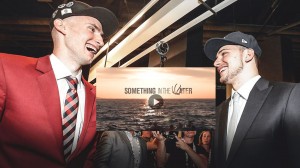 NBA Rookies Luka Doncic, Dzanan Musa star in ‘There’s Something in the Water’ documentary
NBA Rookies Luka Doncic, Dzanan Musa star in ‘There’s Something in the Water’ documentary
Brain game next frontier in sports
It’s not simply teams that might be interested in using neuroscience to gain an edge. Sherwin, speaking over the phone in a recent interview, said that when he spoke on a panel with former NBA commissioner David Stern a while back, Stern suggested deCervo’s technology might also help the officials who call games. To that end this past weekend, when the NHL held a combine for officials in Buffalo, the would-be referees and linesmen spent time working with iPad-based software designed by deCervo to speed their recognition of NHL-standard judgment calls such as boarding and tripping and hooking. In the push to expand the ready pool of top-class game callers, there’s a hope that the principles gleaned from neural research can accelerate the process of becoming an NHL-ready official. “I know (deCervo) likes to call it brain training. I guess it is. We just call it officiating training,” said Stephen Walkom, the NHL’s director of officials. “If we can speed up their learning on the standards we want to enforce, it would help them move along the learning curve before they hit the ice.” Sherwin figures it’s only a matter of time before hockey, among other sports, embraces the idea of neural-based training and testing for its players. “The brain and the nervous system — that’s really the final frontier,” said Sherwin. “You think about it. There’s something (Brady) has learned to see that many others have not. And what we’re trying to do is teach that. We’re trying to teach that in a more efficient way … How do we get the Tom Brady knowledge base into more quarterbacks? That’s, ideally, what we would be able to do.”
https://www.thestar.com/sports/2018/08/19/brain-game-next-frontier-in-sports.html
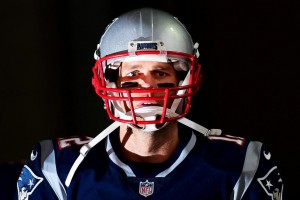 The holy grail of sports science — learning how stars such as Tom Brady think the game, and replicating it — is no pipe dream. (Adam Glanzman / GETTY IMAGES file photo)
The holy grail of sports science — learning how stars such as Tom Brady think the game, and replicating it — is no pipe dream. (Adam Glanzman / GETTY IMAGES file photo)
The fearless Bailey Foley
Benbow bundles the papers and tells Bailey that he’ll see him tomorrow, and that by the end of the day he’ll be a ceremony away from being a high school graduate. Tara, quiet to this point, congratulates her son and thanks his coach as he leaves through the garage and walks down the driveway. The cab of Benbow’s truck is quiet as we drive the mile back to the school. He sees the progress Bailey has made, the way the young man’s kindling-dry wit occasionally re-emerges — quietly, unexpectedly — like a mouse from a hole. The week before, Bailey came into Benbow’s classroom and they spoke for almost 10 minutes about their favorite fishing spots. “It was as close to normal as it’s been,” Benbow says. Three afternoons a week he sits at that little table and finds hope in the smallest victories — a quicker response to a question, a smoother curve on a lowercase G, a sharper edge to a cutting remark — and three afternoons a week he walks away from that little table and feels the promise of the present yield to sadness and uncertainty.
http://www.espn.com/espn/feature/story/_/id/24367811/the-true-story-how-mystery-football-injury-inspired-community-championship
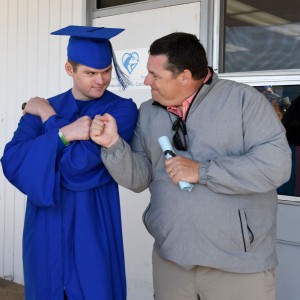 Football kept Foley in school, and Benbow was the only one who could see him through it. Deanne Fitzmaurice for ESPN
Football kept Foley in school, and Benbow was the only one who could see him through it. Deanne Fitzmaurice for ESPN
‘Listen to the Kids’: How Atlanta Became the Black Soccer Capital of America
But soccer jerseys aren’t the only gear hot among young ATLiens. Melissa Franco, Best Buy Soccer’s assistant manager for both the Atlanta and Marietta locations, says that since the 2014 World Cup, youth interest in soccer has “more than doubled” business. “We used to carry just adult items because adults would play soccer after work,” she says. “But now everything is for kids from [age] four to five up to 17 and 18.” Franco has seen an uptick in people who don’t just love the sport from the stands but play it themselves. Over the last half-decade, kids in Atlanta have poured into local youth leagues, similar to how they have done in the past with American football and basketball. “Years ago you would see a few teens scattered around playing, but nothing formal,” Franco says. “Now they’re creating these clubs where you can play at four and five years old up to 19.” Recreation leagues have sprouted up everywhere. A number of them feature children whose parents are celebrities. Waka Flocka’s 13-year-old daughter, Charlie, plays rec ball. She chose the sport four years ago after failing fourth-grade PE. “I thought she was trying to finesse me, but that’s the only sport she’ll go see [live],” Waka Flocka says.
https://bleacherreport.com/articles/2791278-listen-to-the-kids-how-atlanta-became-the-black-soccer-capital-of-america
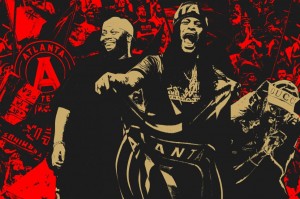 Simone Biles eases to fifth U.S. title, says leotard designed for survivors
Simone Biles eases to fifth U.S. title, says leotard designed for survivors
The color choice wasn’t a coincidence. It was a statement, one Simone Biles felt compelled to make even as the organization she competes for struggles to find a compassionate and compelling message to sexual abuse survivors. The Olympic champion designed the leotard she wore for her fifth U.S. women’s gymnastics title on Sunday, all the way down to the light shade of teal. It’s the designated color for survivors of sexual abuse, a group that includes Biles, who revealed in January that she is among the victims of former USA Gymnastics team doctor Larry Nassar. “[The color] is for the survivors,” Biles said after becoming the first woman in 24 years to post the top score on every event on her way to a national championship. “I stand with all of them, and I think it’s kind of special to unite.” The 21-year-old came up with the idea eight months ago, long before she knew how her comeback following a post-Olympic break would go. In the end, it served as a beacon to her otherworldly gymnastics while highlighting the need to keep the Nassar victims at the forefront.
http://www.espn.com/espnw/sports/article/24420472/simone-biles-claims-fifth-career-us-title-sweep?platform=hootsuite
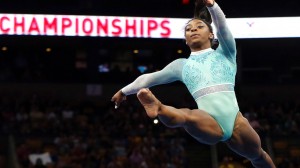 Kofi Annan, Muhammad Ali and the power of sport
Kofi Annan, Muhammad Ali and the power of sport
Annan made sport and development a priority at the UN. In 2001 Annan established the Sport for Development and Peace Office (SDP) as part of the United Nations and appointed Adolf Ogi, the former president of Switzerland, as his special adviser on SDP. For the first time, the growing movement of using the power of sport for development and peace had a central home at the UN. Programs from large urban areas in the United States and Europe to small rural villages in Africa, Latin America and Asia now had a place where they could learn together and from each other. Before stepping down as secretary general in 2006, Kofi Annan declared 2005 as the International Year of Sport. The goals included: eradicating extreme poverty and hunger; achieving universal primary education for boys and girls; promoting gender equality and empowering women; reducing child mortality and improving maternal health; combatting HIV/AIDS, malaria and other diseases; ensuring environmental sustainability and developing a global partnership for development…The goals outlined in 2006 sounded like a blueprint for global development and peace. Because of Kofi Annan, the global community has engaged the world of sport in an attempt to achieve those goals. The power of sport is real and Kofi Annan embraced it.
http://www.espn.com/espn/story/_/id/24436007/kofi-annan-muhammad-ali-power-sport
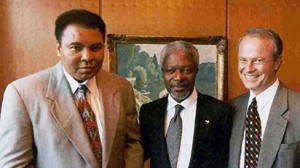 As secretary general, Kofi Annan invited Muhammad Ali and Richard Lapchick to join him for a ceremony naming Ali a messenger of peace. Photo: Howard Bingham
As secretary general, Kofi Annan invited Muhammad Ali and Richard Lapchick to join him for a ceremony naming Ali a messenger of peace. Photo: Howard Bingham
When Goalie Loses First Game 11-0, His Dad Posts Clip of His Saves and Prompts Outpouring of Support
A young boy is receiving an outpouring of love and support from top athletes after his father posted a video of his game to Twitter with a special request. Allan Ogle was delighted to watch his son Harrison debut as a soccer goalie for the youngster’s division of the Sheffield-side MDS Beighton Falcons in Chesterfield, England earlier this week. “He’s overcome premature birth, swine flu, pneumonia and has educational challenges,” wrote Allan. “Emotional for me to see my boy debut in goal on Sunday for his new team.” Unfortunately, Harrison’s team lost 11 to 0. A young boy is receiving an outpouring of love and support from top athletes after his father posted a video of his game to Twitter with a special request. Allan Ogle was delighted to watch his son Harrison debut as a soccer goalie for the youngster’s division of the Sheffield-side MDS Beighton Falcons in Chesterfield, England earlier this week. “He’s overcome premature birth, swine flu, pneumonia and has educational challenges,” wrote Allan. “Emotional for me to see my boy debut in goal on Sunday for his new team.” Unfortunately, Harrison’s team lost 11 to 0…“I suppose I thought it would be nice to get a few message from people, but I’ve been overwhelmed with the response,” Allan told BBC. “I just wanted to get the message over to him to enjoy playing no matter what the result.”
https://www.goodnewsnetwork.org/when-goalie-loses-first-game-11-0-his-dad-posts-clip-of-his-saves-and-prompts-outpouring-of-support/
Brands hail the arrival of a new England after World Cup
According to Barker, a combination of a progressive manager and a diverse, talented team in tune with digital culture means there is “less risk” associated with an England sponsorship than in previous years. Hitherto unheard-of players, such as Jordan Pickford and Harry Maguire, offer a unique opportunity for brands, he says. Even an “old organisation” like the FA has become has “a lot younger and more dynamic”, Barker adds. “It’s been a great World Cup for the brand of the England football player. They are young, they seem much more relevant to youth culture and more approachable. If you compare that with a young Wayne Rooney, well, it’s worlds apart. They already feel more naturally marketable for brands,” he says. Furthermore, the success of an England sponsorship is no longer dictated by the performance of 11 players: the Lionesses, England’s women’s team, will go into next year’s World Cup as one of the favourites after an unprecedented period of improvement. At the under-17 and under-20 levels, England also boasts two World Cup-winning teams. Brands can also capitalise on the FA’s improving infrastructure for the grassroots game, including its Wildcats football centres for girls between the ages of five and 11, and its new Matchday mobile app, aimed at helping amateur clubs manage players and fixtures. At a time when the nation’s politics are bitterly divided, and expectations were lower than ever, the England team surprised us all with a captivating run to the semi-finals. They even won a penalty shootout.
https://www.campaignlive.co.uk/article/brands-hail-arrival-new-england-world-cup/1489952
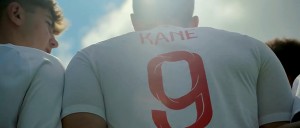 Who Wants to Be a Gold Medalist?
Who Wants to Be a Gold Medalist?
“The Next Olympic Hopeful” scouting program — part flashy TV production, part grueling physical test — is the result of a need for fresh athletic talent in some Olympic sports and a pitch from Brian Gordon, the senior vice president and managing director for marketing and media at the U.S. Olympic Committee, and his colleagues Lisa Baird and Alan Ashley in 2016. “He had us repeat the phrase, ‘You’re the next Olympic hopeful,’ a few times,” said Kelly Skinner, the vice president of sport performance at U.S.O.C., imitating Mr. Gordon in a singsong “Jeopardy” voice. The sports performance staff liked the sound of it. “We have a TV show,” Mr. Gordon said. One year later, the competition and TV show came into existence as the “American Idol” of American Olympics. Instead of winning a recording contract, competitors win the chance to train for a slot on an Olympic team, with financial support. The idea of “talent transfer” — that a sprinter could become a bobsledder (Lolo Jones) or a gymnast could become a diver (the Galashan twins) — is not new. But in the “Olympic Hopeful” model, the athletes don’t come from professional sports backgrounds. Most are full-time students or hold full-time jobs.
https://www.nytimes.com/2018/08/20/style/olympics-reality-show.html
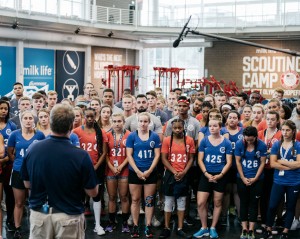 Athletes from Team USA listened to the names selected for the next round of tryouts.Credit Benjamin Rasmussen for The New York Times
Athletes from Team USA listened to the names selected for the next round of tryouts.Credit Benjamin Rasmussen for The New York Times
|


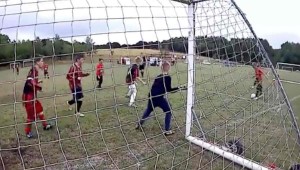

Recent Comments